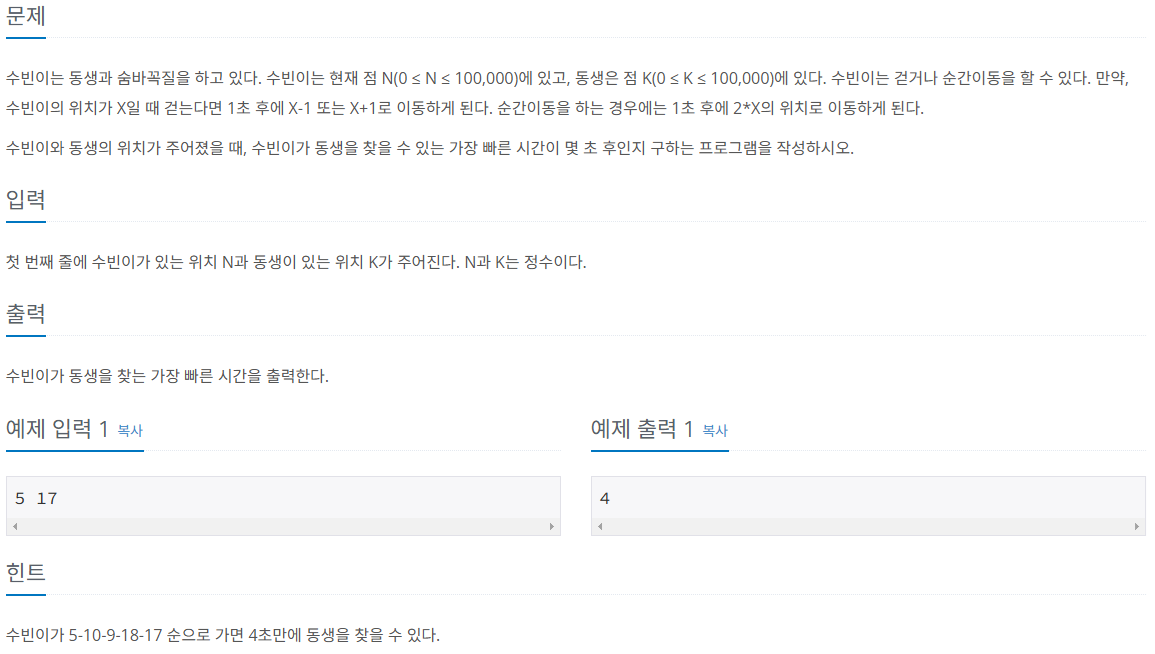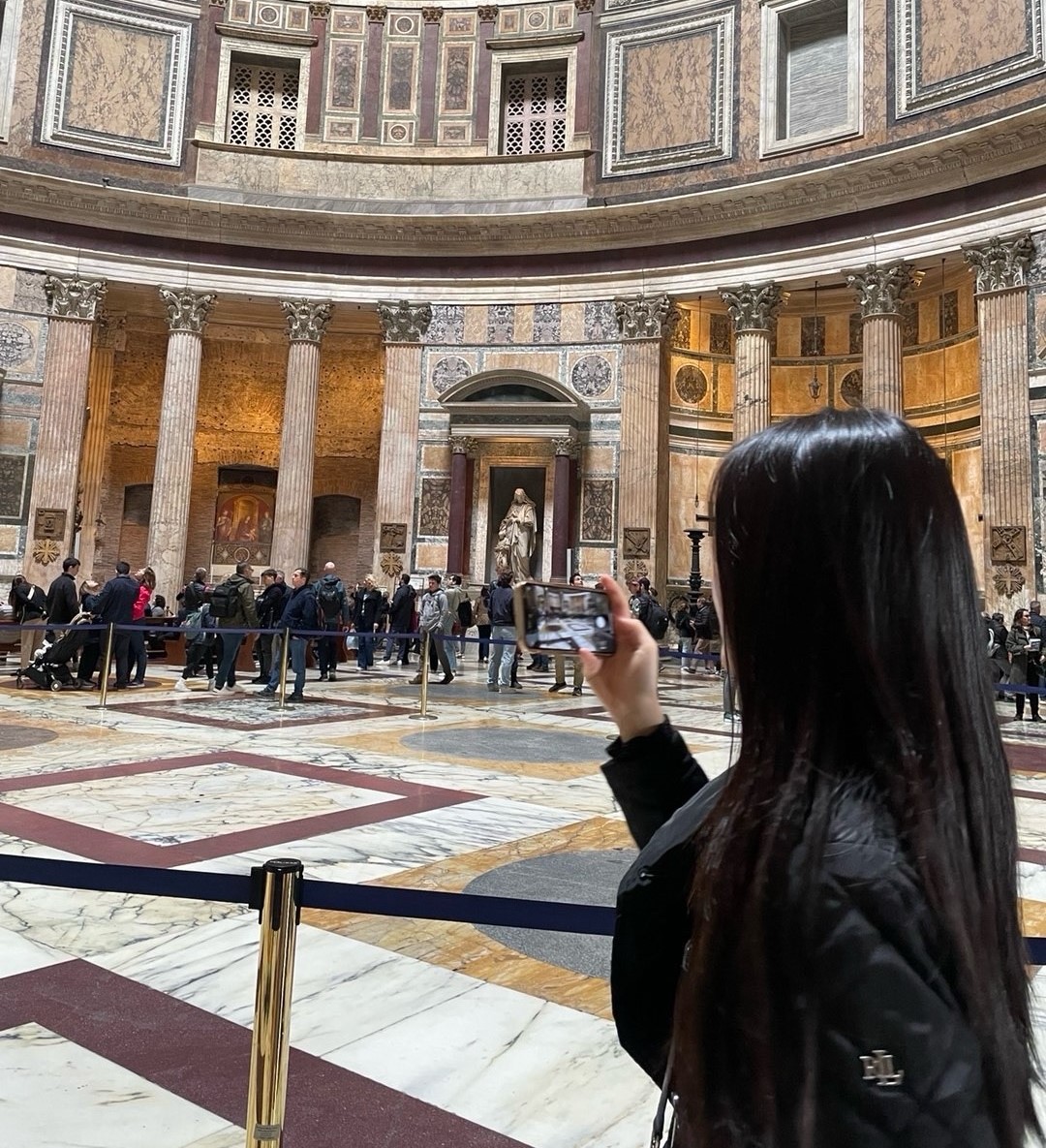[Baekjoon/C++] 1697번 숨바꼭질
문제 설명

코드 구현
#include <iostream>
#include <vector>
#include <queue>
using namespace std;
void BFS(int n, int k){
queue<pair<int, int>> q;
vector<bool> visited(100001, false);
q.emplace(n, 0);
visited[n]=true;
while(!q.empty()){
int x = q.front().first;
int sec = q.front().second;
q.pop();
if(x==k){
cout << sec << "\n";
break;
}
int next[3]={x-1, x+1, 2*x};
for(int i=0; i<3; i++){
if(!visited[next[i]] && next[i]>=0 && next[i]<100001){
q.emplace(next[i], sec+1);
visited[next[i]]=true;
}
}
}
}
int main(){
ios::sync_with_stdio(false);
cin.tie(NULL);
int N, K;
cin >> N >> K;
BFS(N, K);
return 0;
}
visited 배열 선언을 통해 방문 여부를 체크하는 이유!
- 먼저 방문한 경로가 항상 더 짧기 때문에, 이미 더 짧은 경로로 방문한 위치를 나중에 더 긴 경로로 다시 방문하게 되면 최단 경로를 보장할 수 없게 되고 중복된 경로로 인한 불필요한 연산과 메모리가 낭비된다.
처음 방문 여부를 체크하지 않고 제출했더니 메모리 초과가났다.
visited 배열로 체크 후 다시 제출했더니 메모리 초과가 해결되었다.
출처: 백준, https://www.acmicpc.net/problem/1697
